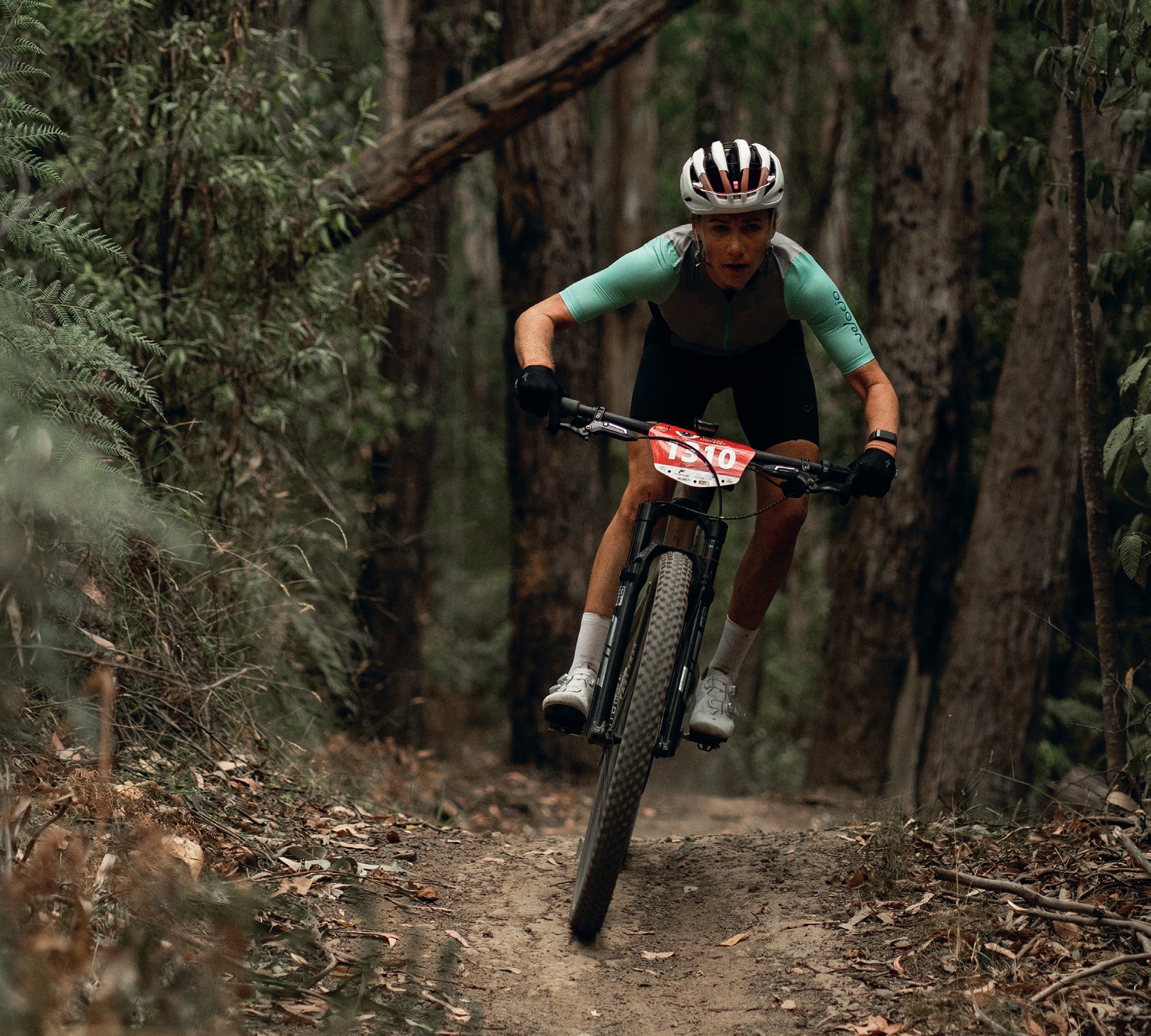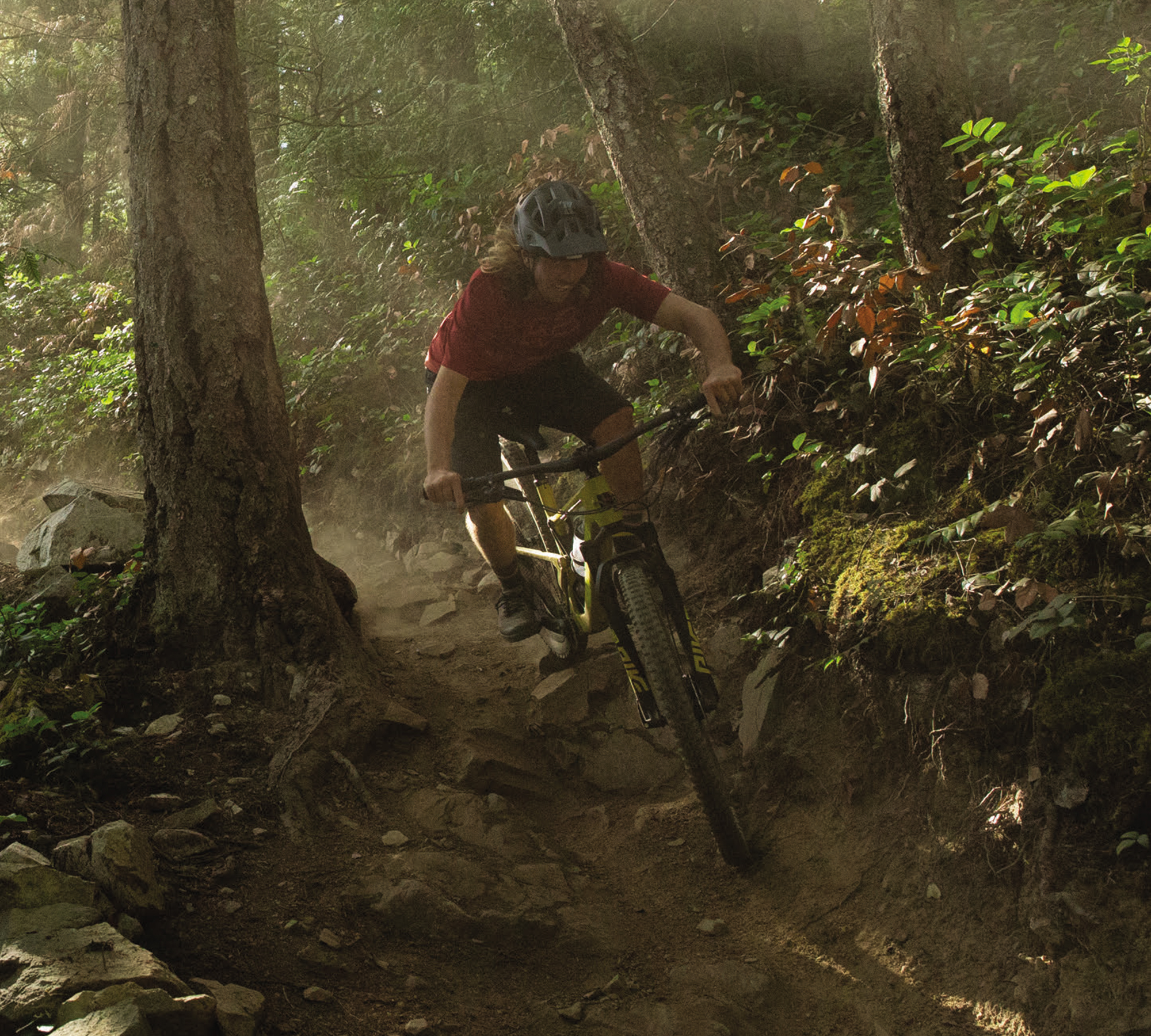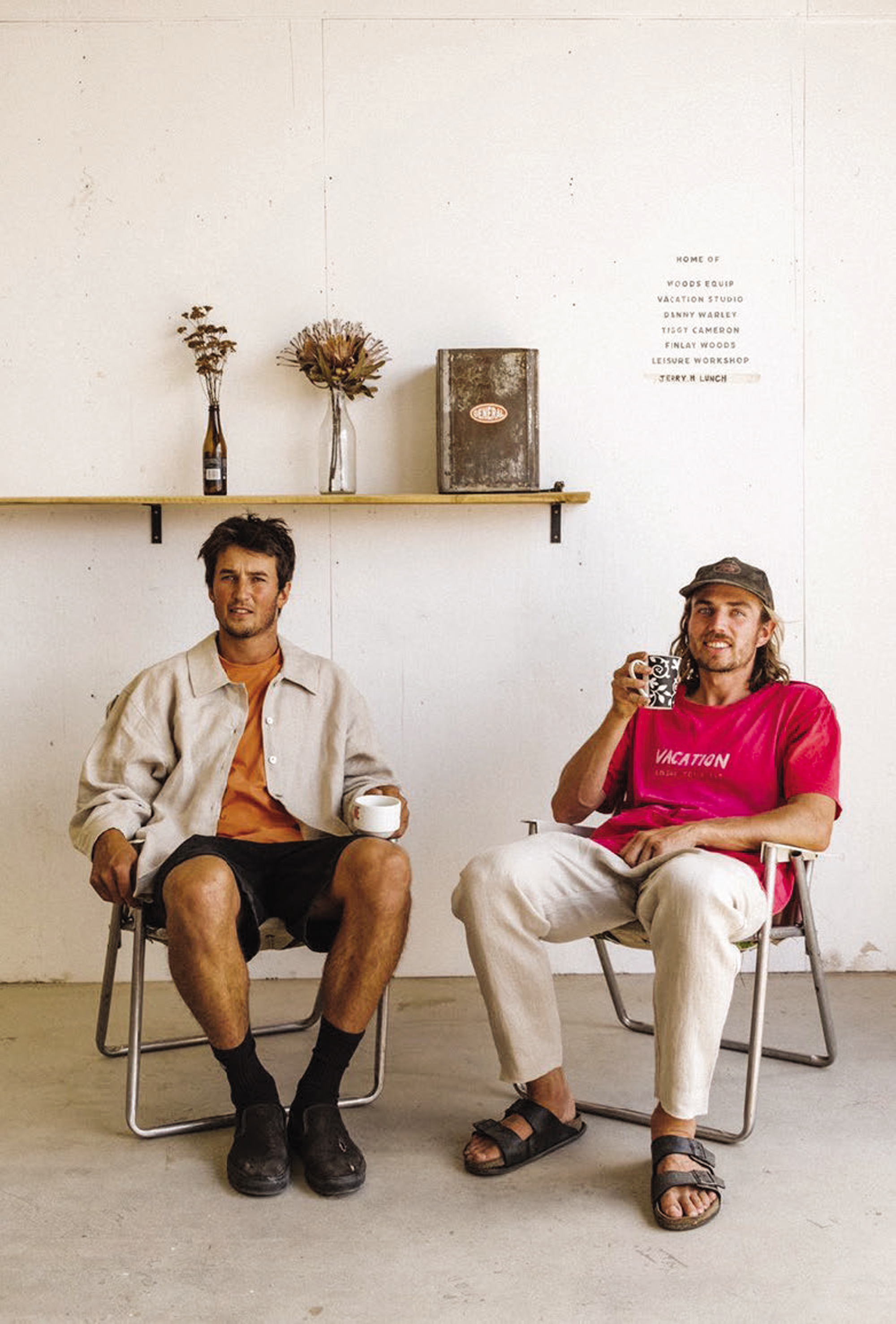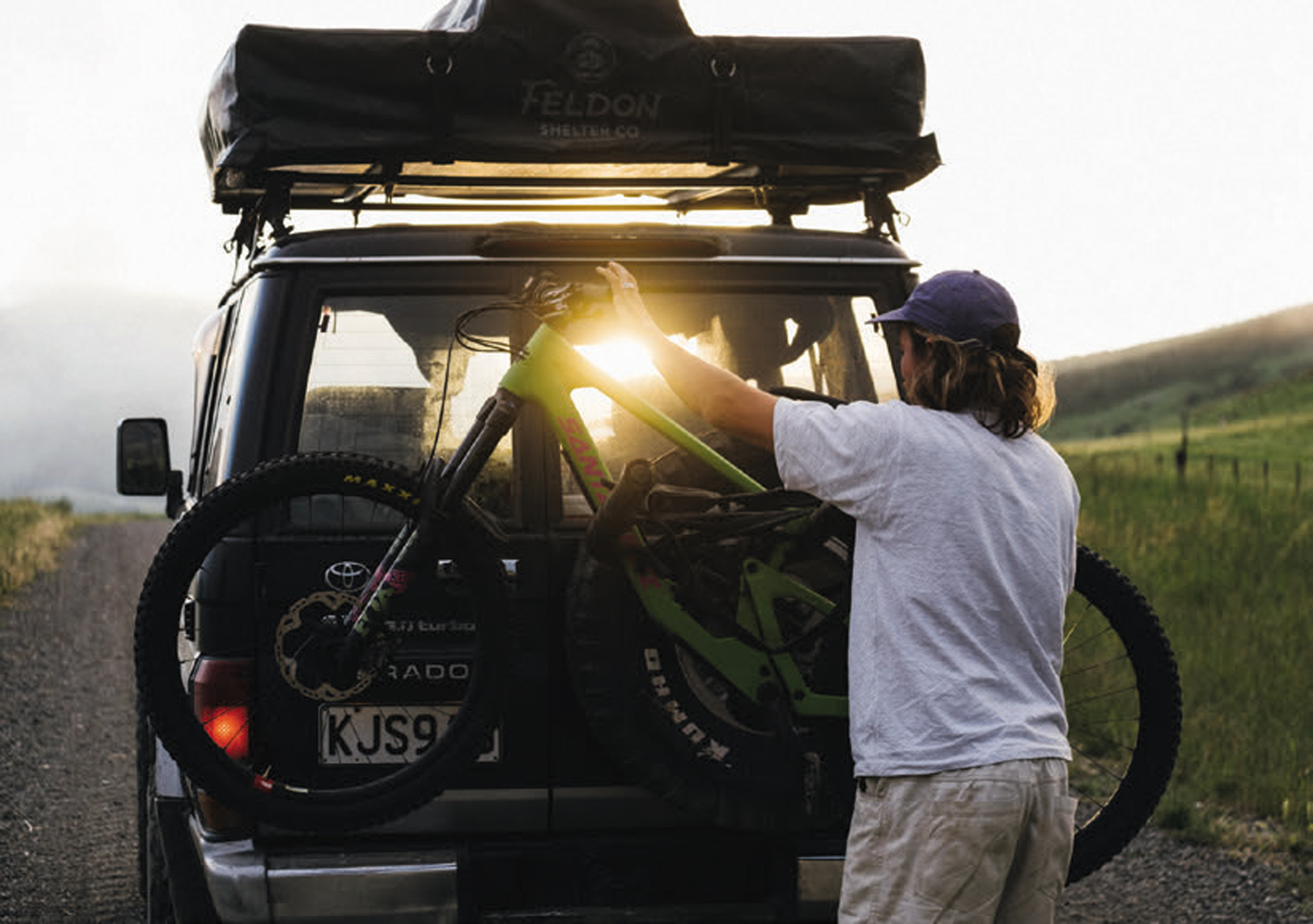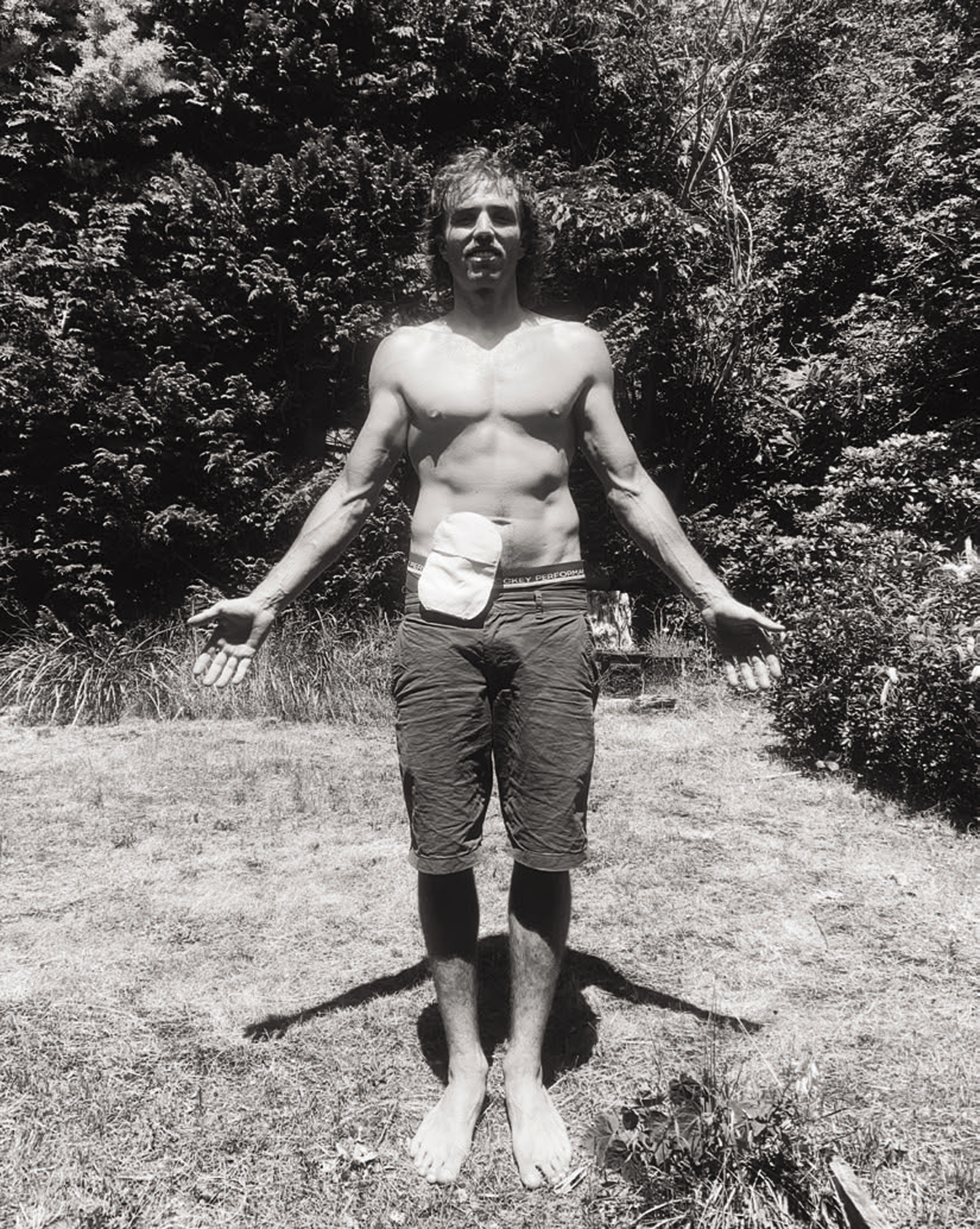Samara Sheppard: Ups and downs
Words Lester Perry
Images Phillip Sage
For over ten years, Samara Sheppard has been quietly going about her business, making moves and climbing the global off-road racing ranks.
From Wellington PNP races and NZ National Series events, to U23 XCO World Cups and Marathon World Championships, her career up until 2024 had been primarily based around mountain biking. The new year brought a change in focus and renewed motivation, prompted by a maiden voyage at the ABSA Cape Epic and a run at the US-based Lifetime Grand Prix series.
Born in Clyde, Central Otago, Samara’s family moved to Wellington in her fourth year. Raised in an active family, she was destined to become an athlete of some sort. “My dad was into adventure racing and endurance events like the Coast to Coast and Ironman. My brother also took to cycling but steered more towards downhill racing, as well as rugby. We mostly all ran cross- country. Mum would taxi us around. My sister, a brilliant swimmer and very intelligent—she often found smarter ways to spend her time.”
Not one to be pigeonholed into a single sport, Samara “played every sport under the sun and particularly enjoyed gymnastics from a young age, then onto netball, soccer and cross-country running”. In years to come, this excitement for running would ultimately open the door to mountain biking for her.
“I had a lot of energy as a kid and was able to channel this into gymnastics. But, as I was getting older and other sports like netball and soccer became available, gymnastics was becoming a full-time sport. I quit gymnastics to try out new things. I remember some Saturdays when I was around 12 years old; I would have soccer first thing, then a game of netball, then a running race, and then dance practice. Hardly surprising that I developed a taste for endurance sports!”
After being sidelined by a running injury, Samara’s father steered her toward mountain biking as a way to stay sane. “Once I discovered how awesome it was to adventure through Wellington’s hills and around NZ, I was hooked. I started racing straight away in the local PNP club events and loved the buzz.”
School life provided two critical things for Samara: socialisation—she wanted to hang out with her friends all day—and the schoolwork satisfied her competitive spirit.

“I always found maths easy, and I treated the work like a race, always trying to be the first to complete the work with accuracy. I think I still have the record at Churton Park School for quickest to complete the basic facts sheets.”
By high school, when she could choose her own subjects, MTB had started to rule her existence: “I chose to do the minimum subjects needed to pass NCEA so I could spend more time riding my bike.”
“My first seasons racing XCO in Europe as U23 were pretty exciting—getting to explore the world and racing against the best there is. The people you get to spend time with, new experiences, and the racing buzz is always rewarding. This year is exciting because it’s a whole new scene (to me) racing in the US, but it’s an easy one to navigate as it’s an English-speaking country and where the industry gets behind privateer riders. It’s really exciting to work with some of the best brands in the business and challenge myself in various off-road race formats.”
Although Samara continues to compete globally, the inspiration to keep pushing herself comes from those closest to her: “I’m inspired by my dad, the ‘old boys’ in Wellington, and the riders I’ve had the pleasure of competing against and riding with over the years. Today, my biggest influence comes from my husband, Kyle. He always keeps cycling fun and designs the best routes to ride. I’ve always raced well when I’m having fun. And Kyle has been a major influence for that over the past eight years.”
Many athletes appear one-dimensional, all- consumed by their pursuit of physical excellence, but Samara’s not one of them. Over the COVID lockdowns, with borders closed and racing paused, many cyclists took the opportunity to get a solid training block, emerging from the period fit and raring to go. Samara chose to further herself over the period and emerged with a master’s in public health. “I couldn’t leave our local government area, and there were no races. I was working part-time at a health clinic but was out of work with all the restrictions. I decided I needed a challenge and was motivated to get a reliable job through times like those. I was also aware of how lifestyles were becoming more sedentary and could see in the healthcare clinic the impacts that has. After the pandemic, I ended up taking on a role with Wollongong Tourism as a UCI Bike City Coordinator to help make cycling an easy option for people in the city.”
When US-based Argentinian racer Sofia Gómez Villafane was on the hunt for a 2024 teammate to try and reclaim the overall title she and Haley Batten (USA) won in 2022, Sofia’s 2023 teammate, Katerina Nash, suggested Samara could be a good fit. Both have similar backgrounds, transitioning from the short XCO discipline to the more endurance-focused marathon XC and gravel-style races. Sharing Specialized as a sponsor ticked the first box, and Samara’s palmares spoke for themselves: 6th at the 2023 MTB Marathon Worlds Champs, Oceania Marathon Champ, and NZ Champion, amongst other strong results; Sofia knew they were in for a strong performance. The southern hemisphere pair would take the start as an unknown quantity. Although this was to be Sofia’s fourth Cape Epic, it would be Samara’s first, and the pair hadn’t raced as partners before. South Africa wasn’t completely uncharted territory for Sheppard, however, as she’d raced the World Cup in Stellenbosch back in 2018. The pair ultimately finished 3rd at the Absa Cape Epic, Samara becoming the first Oceania rider to finish on the podium at this prestigious event.
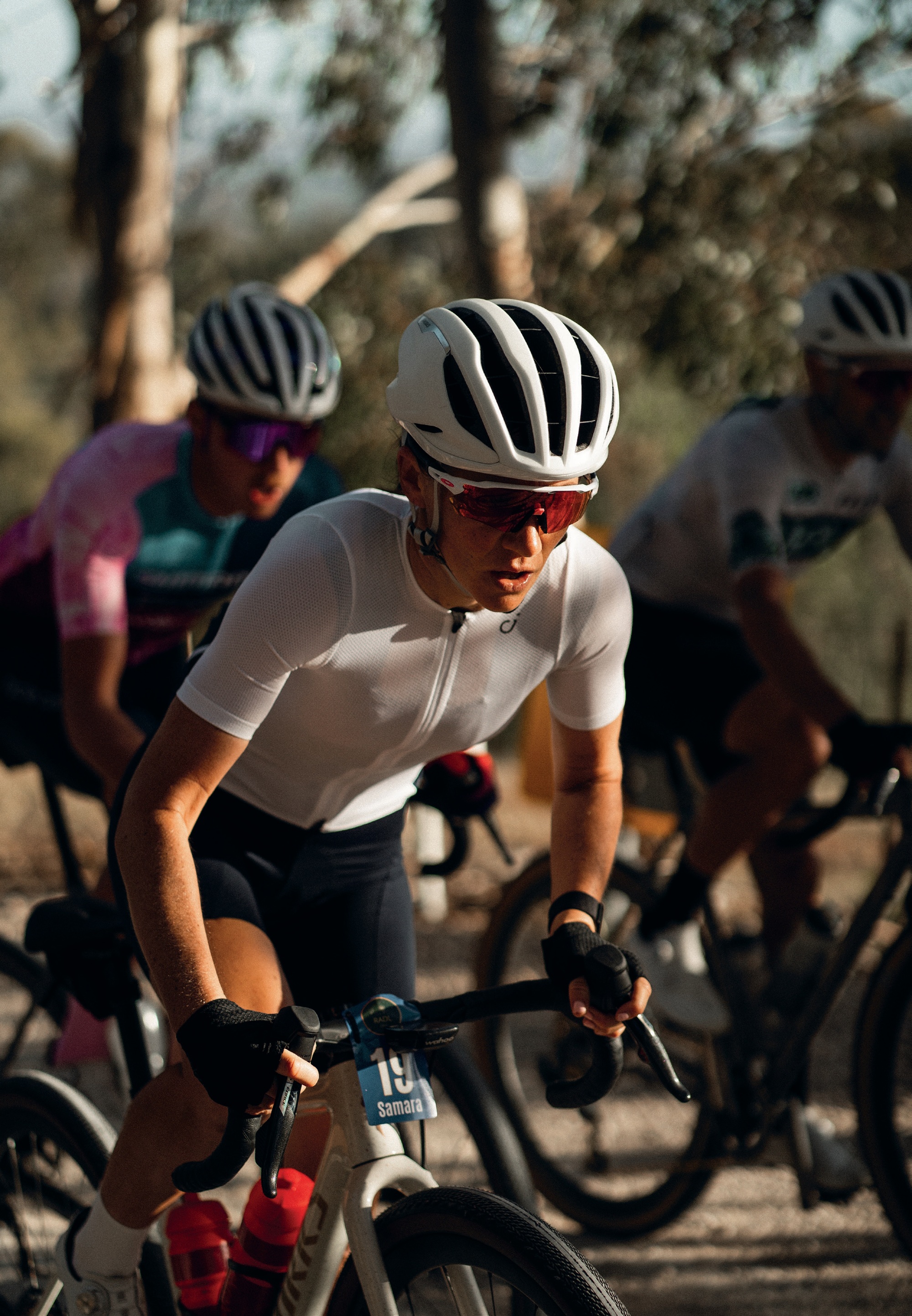
Weeks later, the pair lined up for the Lifetime Grand Prix (LTGP) opening round at Sea Otter Classic, Monterey, California, racing head-to- head rather than as a team. Carrying strong form from the Cape Epic, Samara took the podium, finishing second, just behind Sofia—a solid start to the Life Time series. “I took confidence from Cape Epic and a deep strength in my legs which set me up for a perfect start to the LTGP. Backing this up with a result at Sea Otter helped secure more industry support that has made the rest of the LTGP possible.“
Taking on a series that not only covers a long time span but also criss-crosses the US, provides some unique challenges; her first LTGP series has thrown her some serious curveballs. “As a privateer, the initial challenge was securing enough support to do it. Then there’s the logistics of traveling around the US, which is just gigantic; navigating visas so we don’t overstay; and finding a home base in the US, as travelling back and forth wasn’t realistic. Races from April to October. Extremely long endurance events. High altitude prep.”
Fortunately, Samara was lucky to become part of the Orange Seal (OS) Academy, easing the financial strain and providing top-notch coaching support, working alongside ex-world- tour pro, Dennis van Winden. “Not only do they make excellent tyre sealant, OS also get behind riders and have created a community in the US with their OS Academy. If it weren’t for John, the owner of OS, and Dennis, the Academy lead, it wouldn’t have been possible to race the LTGP this year. I owe this season to their encouragement and support.”
The LTGP has been a significant learning experience. Unfortunately, some of the learnings have been to the detriment of her performance. The Leadville Trail 100 MTB race is renowned as one of the toughest races in the world. Over its 170km, the course covers a massive 3,600 metres of elevation gain, reaching a peak altitude of 3,800 metres—roughly the same as the peak of Aoraki Mt Cook. “Everyone responds differently to altitude. With two rounds of the LTGP being at high altitude, I made the call to come over to the US three weeks ahead of the first one to acclimatise. By the time Leadville came around, I had spent seven weeks at high altitude (around 2000m). It’s hard to feel good on the bike at altitudes above 3000m, so I would consider doing multiple smaller blocks next time around.”
“Coming into this season, I thought a 100km MTB race very long. Racing Leadville this year opened my mind to what it’s like to race all day. Well, for nearly eight hours, over the 170km MTB course. The longest race in the LTGP— Unbound—is 320km long. Unbound was my drop race this year because I couldn’t fathom how to race that far. After the race, I had a bit of FOMO, so I’ll be working on getting my head and body around racing for 320kms next season!
“Then there have been other challenges like a herniated disc in my back that flared up, getting bitten by a dog whilst out training, which sent me to hospital for ten stitches in my arm and a mighty dose of antibiotics, then recovering from a concussion after hitting my head on the ground racing SBT Gravel (non-LTGP race). The most challenging part remains—to achieve what I set out to do: I took on the LTGP because I believe I have what it takes to finish on the overall podium. The challenge remains to make it happen.”
Following SBT, the circus was off to Chequamegon, where she finished 10th and scored 7th place points (three non-LTGP riders in front of her). Samara was showing signs she was on the way back from her injuries and looking strong heading into the Marathon World Championship and the final two LTGP rounds.
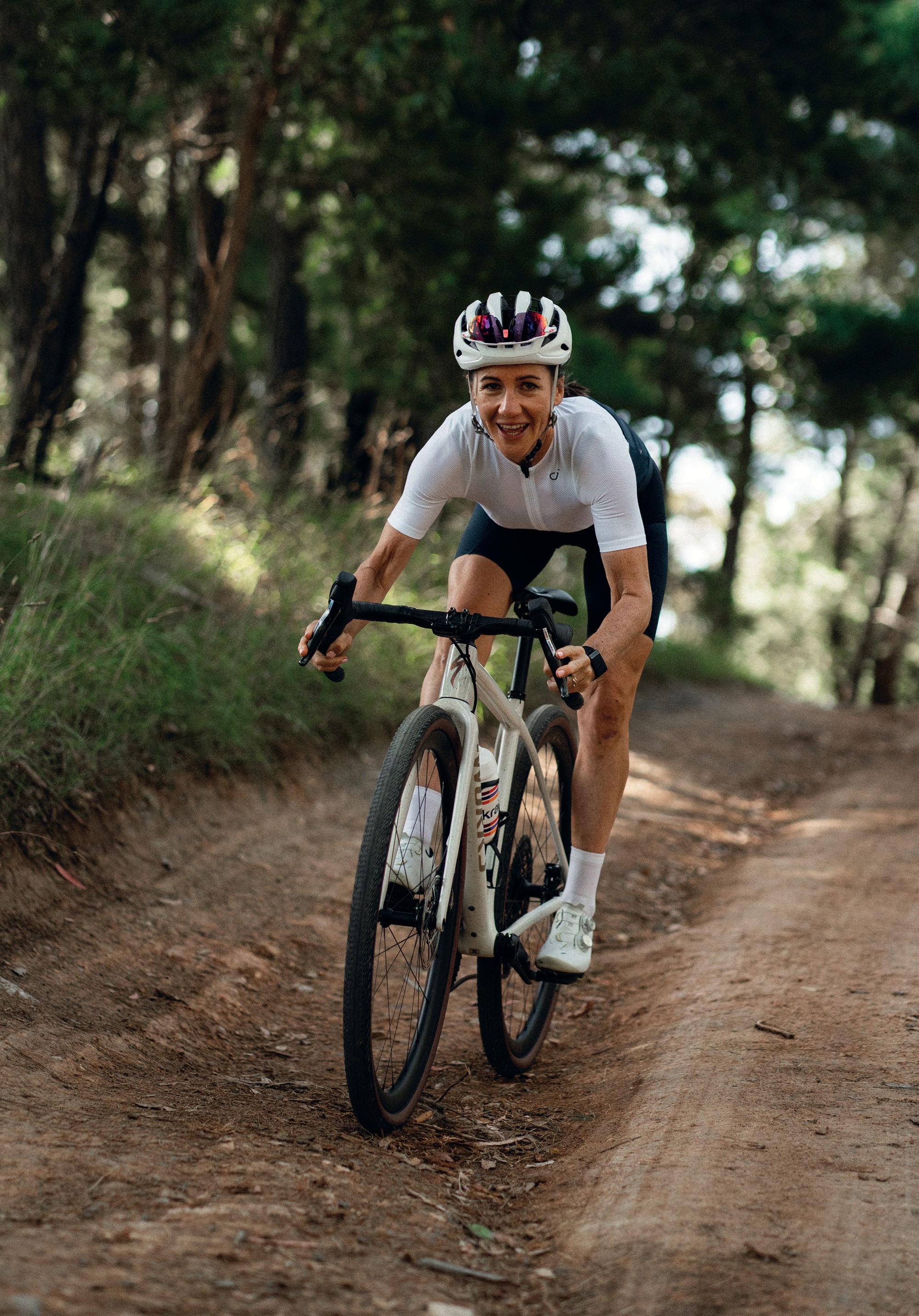
Next up was to be the UCI World Championships in Snowshoe, West Virginia. Once again, luck wasn’t on her side. “It was my first ride on the Marathon Worlds course, and the course markings and .gpx files didn’t match up, so I was a bit lost. I’d found some friends to try to figure out the course with. It had been raining for a few days, so the trails were slippery. I was following one of my speedy friends down a technical section, and I didn’t see a small stump that I clipped my pedal on. I went over the bars and hit my knee hard on a rock slab, slicing it open, causing swelling and aggravating my bursa. It also triggered some concussion symptoms from a crash I’d had four weeks prior.”
“It was really sad to miss out on racing Worlds. I’ve loved the buzz of World Champs ever since I watched XC Worlds in Rotorua in 2006 and competed in my first World Champs in Scotland in 2007. It’s a special opportunity to represent your country and race the best in the world, chasing a rainbow jersey—a big goal of mine, especially after finishing 6th last year and 5th in 2019.”
Unfortunately, her injuries sidelined her for LTGP round six, The Rad Dirt Fest, so her focus shifted to the final round—Big Sugar in Bentonville, Arkansas. “This season has had its fair share of highs and lows. Dealing with so many injuries and setbacks in one season has been tough, especially since I took a break from work to compete in the U.S. The smaller setbacks, like being bitten by a dog and splitting my knee open, were relatively minor and straightforward. But the concussion has been a completely different challenge. Every concussion is unique, and people can only tell you to be patient and take your time. You just can’t push through symptoms like you can with other injuries. “I remind myself that there’s more in life I want to achieve, and for that, I need a healthy brain. I try to be kind to my body, not overthink things, and focus on what I can control—like getting enough sleep, eating well, and appreciating where I am. Having a strong support system with Orange Seal Academy, led by Dennis van Winden, who checks in every day and brings a wealth of data to guide decisions, has been a big help. Making a plan based on both data and intuition helps me stay positive and keep moving forward.”
Now in its third year, the LTGP has been refined and built on each successive season, but there’s still work to be done. “I don’t like how the women’s races are influenced by men who are racing on the course at the same time. It’s great that the pro women have their own start wave this year, but if the women could race on a clear course, that would make the racing safer and more fair.”
The LTGP is the largest offroad cycling series in the world, and even though the pointy end of the competition gets most of the media attention, all seven rounds of the series attracts thousands of everyday riders keen to toe the line against the pros. “It’s also super inviting for beginners to pro riders. Combining the LTGP with mass participant events creates a fun community buzz. The LTGP are doing great things to develop fandom, like with the incredible docos they release 48 hours after the race, the pro panel discussions, autograph signings and ways they promote their series.”
“Once the season is over, my focus will be on recovery and building toward 2025. I aim to come back even stronger and wiser. My goals are still big, with plans to return for LTGP in 2025 and tackle a mix of endurance and ultra-endurance gravel and mountain bike events. I’m excited for what’s ahead.”
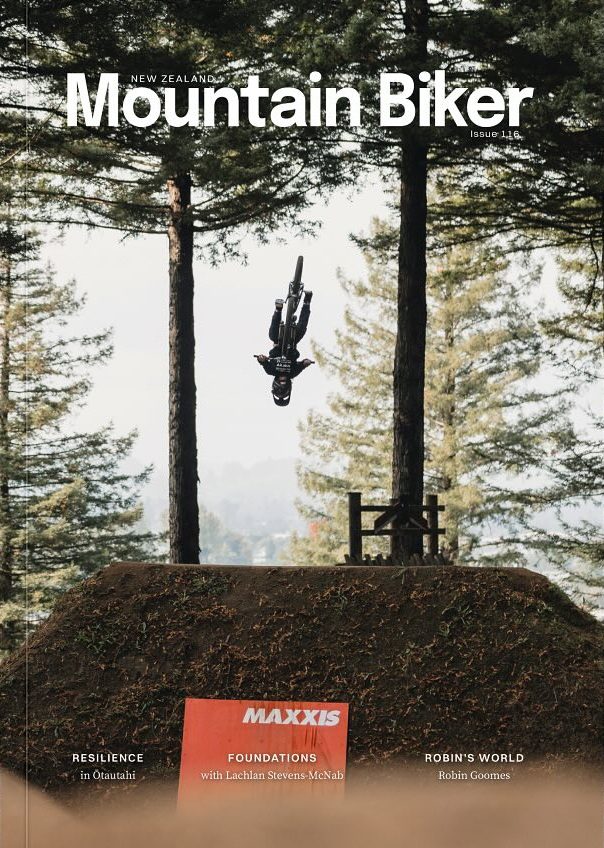
The Maker, Sam Baker
Words Lester Perry
Images Finlay Woods & Sam Baker
How the collision of illness, art, and bikes changed the course of Sam Baker’s life.
From afternoons spent scouring roadside inorganic collections, either for parts or entire bikes, to digging jumps in the back paddock, Sam Baker’s childhood was pretty ordinary for a Kiwi kid in the late 90’s. His earliest years are but a puzzle piece of the guy known as ‘Sam’ to many, ‘Baker’ to others, and ‘Vacation Studio’ to the many brands he now works alongside. Needless to say, the journey of life from those early days in his backyard of Waimauku, to now living in Wanaka, creating graphics and art for many current ‘it’ brands, is a great yarn. Even after knowing Sam for a long while, it’s only now, after working on this feature, that I’ve filled in the blanks and can see how he has ended up doing what he does and why he does it. None of it was by accident, apart from a few pivotal years of illness — but we’ll get to that part of the story.
Raised on a ten-acre block of land in Waimauku, 45 minutes north west of Auckland, Sam’s school and friends were a car drive away, so he and younger brother Zach spent their days racing each other aboard their latest inorganic collection Frankenbikes, unwittingly laying the foundation of their riding skills. With Riverhead forest on their doorstep, the brothers’ lust for playing on their bikes drew them to the area’s notorious trails. “Good in the summer, horrendous in the wet, I kind of just grew up riding there. I was on a 16 inch BMX bike until I was probably 13. That’s all we had. We would just go into the forest on these back-brake only bikes and just bomb huge chutes. And it was pretty wild.”
Aaron Fernandez, now owner of Alta stores in Queenstown, was a key figure in downhill racing in the Auckland area, and a friend of Sam’s father. Seeing how keen he was on riding, he encouraged Sam to broaden his horizons by taking on the Auckland Downhill Series. Now on a larger, better suited bike, a Kona Scrap hardtail, Sam dipped his toe into racing across the Auckland region and so began his journey towards a full-blown bike addiction.
Competition between the brothers helped refine their strengths on the bike. “Especially when we were doing jumps, one of us was learning tricks and stuff, or maybe more style-based; Zach was always way more naturally styley, but I was probably more ballsy, doing bigger stuff. One of us would always be wanting the other person’s (attributes). I could do a bigger jump, but he would do it way nicer, and I was always really angry that he could do it way nicer than me. Then he was angry that I could go bigger or something. The jumps we were building were so sketchy because dad wasn’t building them, it was just me and Zach, a hammer and a couple of nails. And it would be a huge piece of ply with four nails at the top, it would sort of flex like crazy and just springboard you into the air! I look back now (and think) how did mum let it happen? But it was pretty good really, it kind of teaches you to ride anything.”
With access to a digger, the brothers built trails in the yard, eventually building a monstrosity of a pump track. “It was probably like an acre of a pump track. We would just go and add lines that had every possible line option. It was a pretty perfect place to grow up. And I think with it being wet 70% of the time, I look back and I’m kind of thankful for all those wet days because now I love riding in the wet. It’s the best! Whereas generally people kind of hang up the bike for winter.”
With the boys now keen on racing, their next port of call was the infamous Levin Secondary Schools MTB Champs, a three-day competition that drew riders from around the country. They pitted themselves against each other in uphill, downhill, and cross-country, usually using the same bike across the disciplines. This became an annual trip for the Baker family through the high school years. The excitement of racing his peers ramped things up a notch and, after a second place at SS Champs, Sam secured his first sponsor: Bruno at Cyclexpress who helped him to throw his leg over his first proper downhill bike, the iconic Ironhorse Sunday.
By 2007, Sam and Zach had caught the downhill fever. With parents in tow, what was previously their yearly trip to Levin was now a full national race series trip. “We just dove straight into it, really, we went and just did the full series first crack. That was our family holiday. The olds bought a tent and the whole family just camped for like six weeks or whatever it is, down around the whole South Island, just doing the races. I was maybe 16 or 17 when I first did a national series, and I did it every year until 2012, just driving around.”
Sam was selected for the NZ team during his first year in the U19 category in 2009, hoping to represent NZ in Canberra a few months later at the World Champs. Unfortunately, soon after selection, Sam crashed and broke his wrist. With theoretically enough time to recover before Canberra, he set to work making the most of a bad situation. “I was just hedging all my bets on Worlds in Canberra that year. It was a pedally track, and that certainly wasn’t my forte, and I ended up having another huge crash there. My first year under 19 wasn’t what I was hoping it would be; I missed going over to Europe and doing the full trip and everything. I kind of was just sitting at home with a cast training for Canberra, really.”
Putting his lacklustre 2009 season behind him, in 2010 Sam headed for an entire season in Europe, hoping the trip would be a step towards World Cup domination or at least some decent performances. It shaped up to be another year of discontent. “I met Josh Bryson in 2008 (Josh went on to be a high-profile pro) when he came over with his family and did a New Zealand series here. So we’d stayed in contact, and then that was our base initially. We flew into Manchester and stayed with Josh for ten days or so. We used his driveway to build out the van we’d brought, he’d given us a car to go and look at vans and stuff, and we’d go riding with him at the local woods around there, which is pretty sick. Looking back now to see where he’s come from, what he’s done and where he’s gone, is pretty sweet.”
“We were there for maybe three months, we got an apartment in Morzine, based ourselves there, and kind of just picked and chose a few races around and did all the World Cups we could. I remember the first one being Fort William, and that was just so eye-opening, dropping straight into this famous, huge, rough track. Just so stark in comparison to what we have in New Zealand.”
“It was an experience of a lifetime, and I loved it, but I was just at a bit of a crossroads. Like, do I go to Uni? Do I chase it for another year? It took me ages to decide, but in the end, I was like, I’ll go to Uni and get that out of the way, then I can always come back to bikes. It’s kind of crazy; over that time at Uni, the whole mountain bike world sort of changed. There wasn’t enduro racing; there wasn’t any of that stuff back then. Enduro was taking off, and that seemed way more appealing. The travel aspect of Enduro, going into different, more backcountry areas, is a bit more exploratory as opposed to just flat-out downhill race runs. I wanted to do that way more.”
“I wish I could go back and do it again, but I’d teach myself to actually do a job. If I were to talk to my son or something, I’d be like, ‘be something’. Be an engineer or something. I just went and studied marketing; I studied a subject that just evolves and changes so much. I’d always done art and design at school, and I kind of was thinking, oh, you’re in marketing. You’ll be like, the creator of the ads. You’ll be able to make some cool stuff. But marketing just grooms you to be a sales rep, which is not what I wanted to be. In the end, it was great for the experience and developing as a person. The biggest thing Uni did for me was shape me as a person. It narrowed down what I liked and what I didn’t because, coming out of school, I still didn’t know the world. It’s pretty hard to get out of school and choose what you want to do. For me, it was all about bikes at the time. Then I had this other side of me, which was always into making stuff. It was my first time fending for myself, and that kind of aspect of Uni was good, but actually coming out of it with a marketing degree — maybe not so much. I did marketing and economics, majored in both, but haven’t used it since.”
By 2013, and with World Cup MTB dreams behind him and degrees underway, riding was taking a back seat and, unfortunately, so was his health. A trip to the bathroom one day resulted in Sam spotting blood in his stool, the first symptom of his Crohn’s disease and a crucial turning point for everything in Sam’s life.
“At the time, all you think of is, is that cancer? What is that? You’ve got no idea. And it took them quite a while to figure out what it was. I went and saw people; whatever they initially thought it was, it wasn’t. There’s Crohn’s and ulcerative colitis, which are virtually identical symptoms but have vastly different treatments, which is a pain. So they were treating me for ulcerative colitis, which is kind of curable, I guess, whereas Crohn’s is incurable.”
For the next couple of years, Sam underwent treatment, surfing waves of feeling okay, almost normal, then having flare-ups. The disease sapped his energy to the point of being bedridden. “Your body’s fighting this internal battle. It’s like an autoimmune disease, Crohn’s, and so your body is just sending all these white blood cells and pretty much running your body down while trying to fight this imaginary disease. It’s like it’s attacking your digestive tract, basically thinking that the digestive tract is a virus, and it just eats your insides out.”
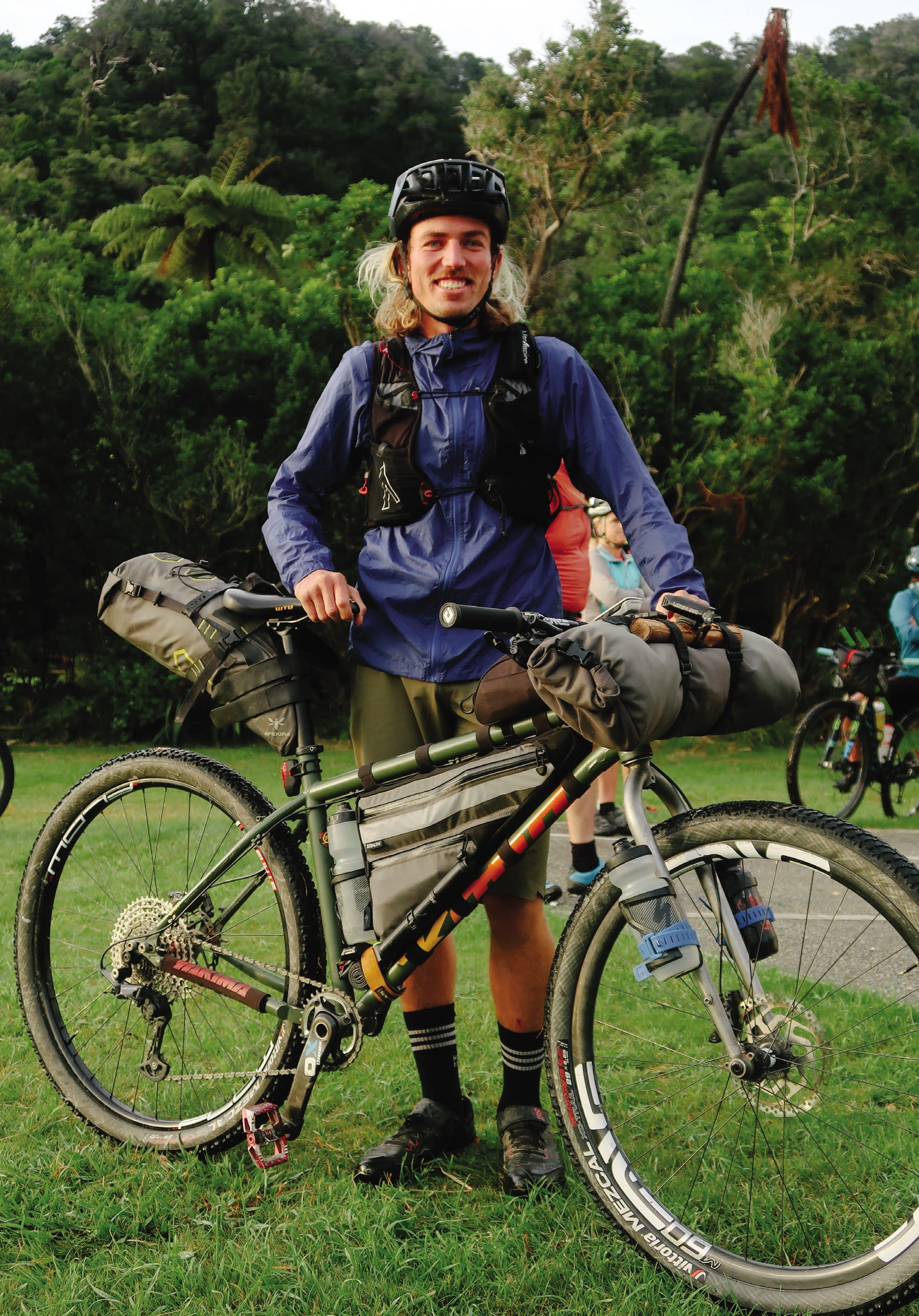
“I had maybe two years or three years of just kind of, like, blindly thinking that it was getting better, but in my head knowing I wasn’t, and ended up having a huge flare-up. I don’t know what you call it, but it’s basically your body going into shutdown because it’s on its last legs, and you just kind of collapse into nothing. And that wrote me off for a whole year. I just kind of lay in bed and never really got out. I could sort of walk to the letterbox, and that would flog me for three days. I just couldn’t do anything. Yeah, it was pretty wild.”
Unable to work, Sam figured he could expand his horizons. With his previous interest in design and art, he downloaded the Adobe Creative Suite and set to work teaching himself how to use the software. “Every day, I would just sit on YouTube. I’d think of something that I wanted to do, Google it, or watch it on YouTube. Yeah, you can just teach yourself to do design, which was cool, but it also caused a good shift in perspective.”
“The recovery process was crazy. Well, it’s incurable, but you can manage it for the rest of your life. You’re on crazy drugs. It’s all chemotherapy drugs and that sort of thing. The drugs roll you just as much as the actual disease does. I was taking these crazy high dosages, and they wouldn’t operate to take out the part that’s being attacked until you’ve been through every possible drug option. It lasted like a year and a half of trying all these drugs before they’d operate, and I was just getting worse and worse.”
“I was just bleeding out my arse all day, not getting any better. Finally, they said, all right, you can have the operation and cut the affected part out. They ended up having to take out my whole large intestine and give me a colostomy bag. Before I went in for the surgery, my whole body was riddled with scabs because I was so run down. Pimples and all sorts going on, just terrible skin. I woke up from the surgery, and all of that was gone almost instantly. Just straight up. Mum was like, holy hell, I can’t believe this.”
“The recovery process after I got that out was so quick. It had been over a whole year of having no energy, couldn’t do anything. Then, within a month, I was surfing again and out riding bikes. It was just a night and day difference, which is pretty nuts.”
He’s not one to delve too deeply into the dark times of his treatment and recovery, but coming close to death a few times had Sam reevaluating how he looked at most aspects of life, questioning what he wanted to do and how and where he’d like to live. “It was a whole outlook shift, focussing on making every day really good, which I hadn’t done before.”
“You can just get swept up in this whole rat race; get a good job, get a house, follow the normal path, but it’s not necessarily the happiest or most rewarding. So it was kind of a cool shift to make every day feel like a holiday, which is how the name Vacation Studio came about. It’s about just enjoying yourself, I guess.”
Back to feeling himself, and with a new lens on life, Sam moved to Mount Maunganui in 2015, primarily to chase the surf, but having Rotorua’s trails just over the hill was a huge bonus. He began working for George & Willy, a homewares brand started by a couple of his school friends. “I was doing all their woodworking stuff, building all their desks and their wooden stuff, and looking after the warehouse. Just living a really easy, simple life and doing my design stuff in the evening. Then, in 2018, I became intrigued by Wanaka. I’d always kind of skied a little bit, and had done some riding in summer down in Queenstown. I thought it would be good to come down to Wanaka for six months and see what it’s like. I’ve been here for six years. Never left.”
Like everyone who’s moved to Wanaka, Sam has embraced the outdoor lifestyle, and every moment he’s not creating something or working on a project, he’s out in the mountains. Bikes, skis or feet, Sam’s out there getting amongst it. Regardless of what time of year it is, bikes are still at the top of the list, and although his roots lie in the gravity side of cycling, these days, he’s exploring new horizons on the gravel and backcountry tracks surrounding his new home, keen to push his physical and mental limits.
In 2022, as the South Island’s COVID lockdowns were lifting, Sam took on his first multiday bikepacking event: the Sounds 2 Sounds, from Marlborough Sounds to Milford Sound. “The ability to slow things down and simplify life is underestimated in this fast-paced world. There is so much to see, and the humble bike allows you to see it in such a unique manner. This was my first multiday bikepacking adventure and, as I rolled into Milford Sound and marvelled that I got there with my own two very worn legs, I realised I’d be back. I quite like my bike.”
Riding 1450km in six days was one way to break new ground and discover what he was really capable of. Riding the road from Te Anau to Milford and not being passed by a single car is an experience he’ll remember forever — and likely no one will ever be able to repeat!
On December 22nd 2023, Sam continued a yearly tradition of breaking personal boundaries and digging deeper to find his limits and took on an Everesting. He was intrigued by the idea and keen to see if it was as brutal as people make out but, more than that, he just wanted to know if he could do it.
Completing seven laps from the Cardrona Valley floor and climbing to the top of the McDougall chairlift at the top of the ski field brought his total ascent to over the 8,848m threshold. Keen to avoid the monotony of descending down the gravel road, he opted to ride down the Peak to Pub trail with a small bomb down the gravel road to finish each lap.
Sam didn’t have a support team or even a plan for how the day should go; he just loaded some food and his bike into the car, drove out to the hill, and got it done — most of it solo. Twenty-two hours and 30 minutes later, he’d knocked it off. Going deeper than he’d imagined, he’d proved to himself that there was another level of suffering he could reach and discovered that even when in immense discomfort, the body kept giving and kept going.
Sam’s riding style lies between two distinct ends of the spectrum. At one end is his gravity side, where he goes fast, rides new lines, and interprets the trail in his own unique way, 100% focused. And, at the other end of the scale is a more thoughtful, subdued, and relaxed style, almost contemplative. This is where he exists when riding gravel or simply exploring an area by bike.
“I love the gravel side of things. For me, it’s like just riding a bike purely for the sake of riding a bike. Because mountain biking isn’t that. You get a gravel bike out to simply just go for a ride. You’re so much more present, and for me, it’s so meditative. You’re not thinking about what you’re doing. You’re literally just turning the pedals and looking around. It’s a time when I can really process things. It’s a time when I’m doing my thinking, I guess. People always ask me, oh, what do you think about when you go on these 100km rides? And I don’t actually even know. I don’t even know if I am thinking at all.”
“It’s just so meditative that anything and everything that’s coming at you, you’re taking in, and whether it’s subconsciously or not, it comes back out. I’ll reflect back on that when I’m drawing or looking at something down the track. The way that stream ran, or the way those trees were, or how the light hit that rock or something, it’ll come back at some point. If you’re mountain biking, you probably would just fly past it. You wouldn’t know at all.”
“Even if I’m riding at the same place every week, I can still find a new thing to look at and a new angle on something. I just like looking at things from a different perspective, I guess. And that’s what I like about art, photography, design, and all that sort of stuff. I’m just taking my unique view on things and making stuff, I guess. It’s basically just pure enjoyment out of both (riding and art).”
“I’m just really addicted to making things in a bad way! Every possible thing that I need. I think that’s why I’m so into design, it’s the process of taking an idea and making something that someone then puts on a t-shirt or whatever. “Or whether it’s building stuff out of wood or sewing or painting, or anything that requires patience and an idea turning into a form. That’s what intrigues me the most; taking raw materials and then coming up with something new at the end of it is cool.”
A glance at any of Sam’s bikes confirms his addiction to making things. Each of his bikes has unique and subtle twists that make each his own. Some of his fleet has echoes back to his childhood and the inorganic collection Frankenbikes – hunting out obscure framesets from back in the days when he was a kid, cobbling them together with unique, often used, parts. From a twenty-six inch single speed dirt jump bike, to high-performing all-mountain trail bikes and retro-commuters, Sams’s bike rack spans the spectrum of cycling genres and a vast timespan.
Sam’s friendly, relaxed, unstructured, and colourful hand-drawn style catches the eye of many an art director. After getting exposure from well-known and large brands, like Pals drinks, among others, his phone has been running hot with enquiries from people who like his style and want something similar to tie their brand to.
“It’s quite hard to replicate yourself over and over. Like for Pals, for example, they’re a big one I’ve done (work for). So many people message me asking, can I get something that’s similar to Pals? I don’t want just to keep repeating myself; it just becomes boring. Whereas, with Good Lids (a Hemp headwear brand), I get the chance to develop myself and try new techniques and styles that I’ve thought about or want to express. I don’t always want to stay in the same rut and become a repetition guy. My Good Lids work is probably the most rewarding. But every client has their own merits. (Good Lids) just trusts me. He’s just like, right, it’s time for another round of designs. You know what to do. I’ll just send back, like three pages of concepts. Probably 50 drawings, and he’ll just pick and choose. But he just gives me complete creative freedom with it, which is pretty cool.”
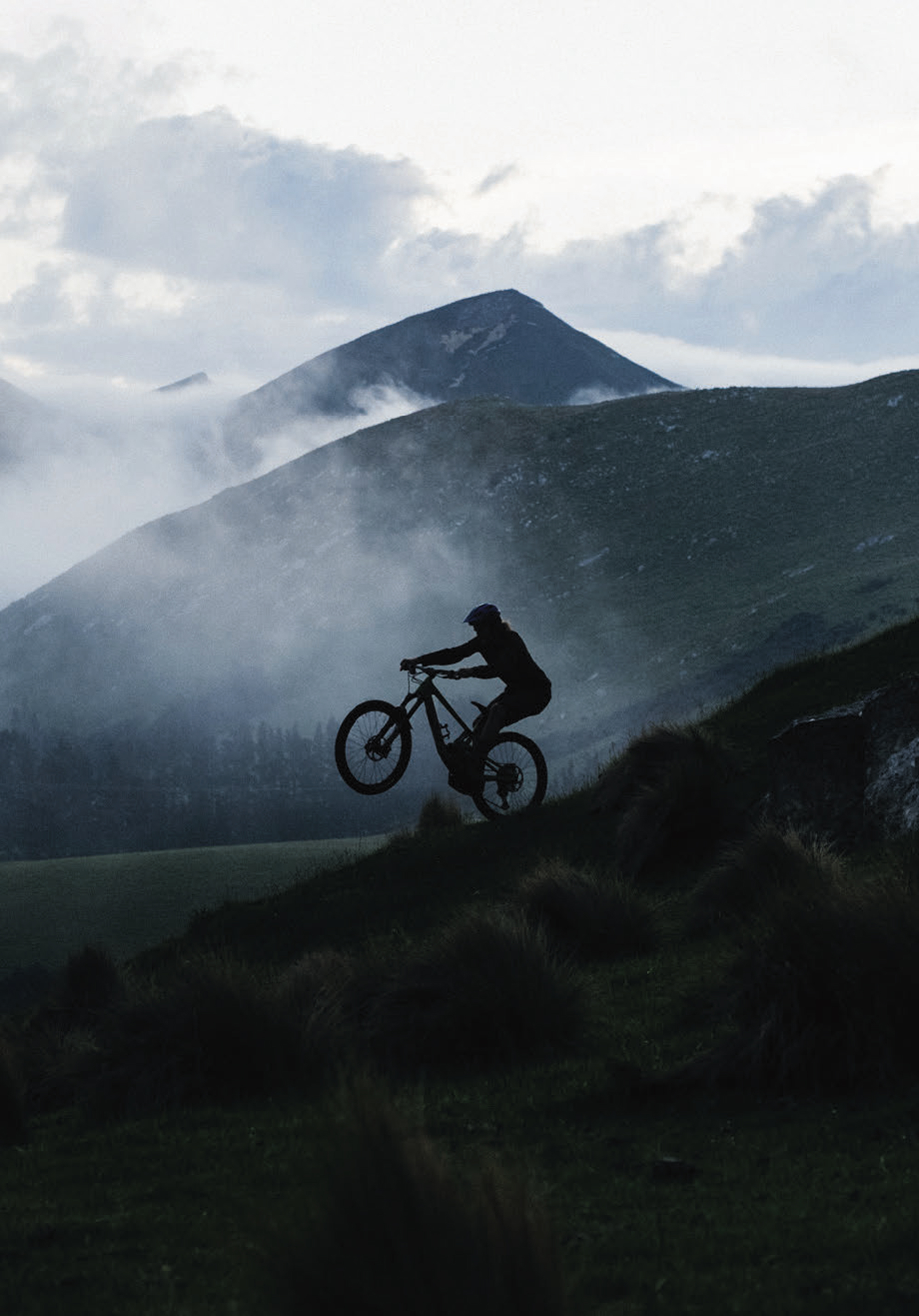
“I’m pretty lucky to take it from where it was, just working at home, pumping out my own stuff, to now full-time for the last few years. It’s pretty cool.”
Sam’s a pretty low-key guy. He’s happy to go about his business, and although his work is seen all over the country and abroad, he’s still the same old, down-to-earth, chilled guy. All he wants is to live like he’s on vacation, chill and ride his bike while creating some fun projects, whatever they may be. Sounds like some solid life goals to me!
This abbreviated piece written by Sam summarises his thoughts on his condition and gives a window into his quiet intellect.
I have Crohn’s. I have no large intestine, and my small intestine comes out of my stomach and into a Colostomy bag. I’ve had this since 2015 and will have it for the rest of my life. I accept that. It saved my life, but that doesn’t make it my friend. I get tired of it. Some days are good, and other days I cry. Lots of days I’m embarrassed, if my bag leaks in my wetsuit or into my sleeping bag. It’s not fun, and I hide. And I don’t want to.
It has taught me so much about myself, and for that, I’m thankful. Life is short. Try things, be brave, be uncomfortable, be happy, be kind. It’s hard, and I struggle, and I hide, I’m not brave and not comfortable. But I want to try to be better and show others who battle with themselves that they can try too, they can talk, and they can grow. If you want to talk, ask me.
I’ve been to most places in my head, and I know them all very well. This isn’t a sob story. I don’t want sympathy, but I just want to be braver and more comfortable with who I am. I just want to be Sam — me.



